Draw Circle Using Graphics in C++
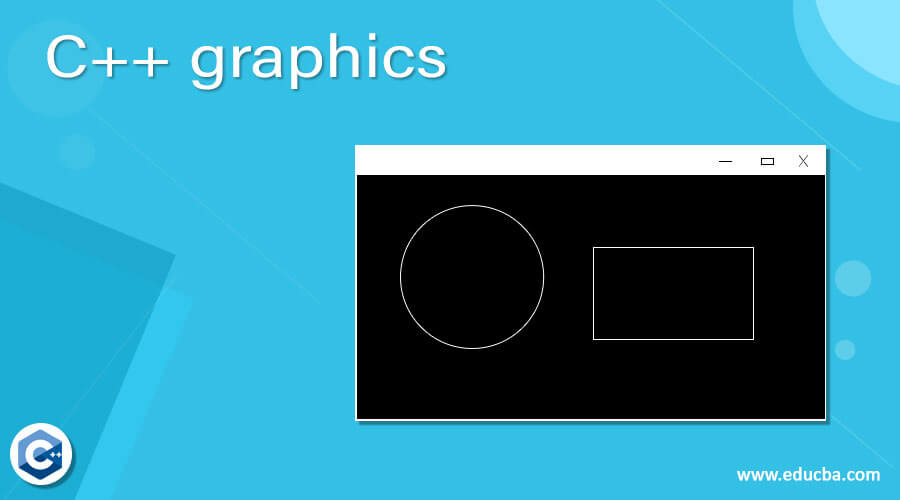
Introduction to C++ graphics
Graphics in C++ is defined to create a graphic model similar creating different shapes and adding colors to it. It tin can be done in the C++ console by importing graphics.h library to GCC compiler. We can draw the circle, line, eclipse, and other geometric shapes too. The awarding of Object-oriented Programming is a primary technique to be used hither. C++ does non have whatever built-in functions to perform drawing as they have low-level programs to use; instead, we can use API to practice graphics.
Syntax
The formal syntax is given as:
# include<graphics.h>
{
Initgraph();
}
Few Graphics attributes are:
setcolor(color), setbkcolor(color), setlinestyle(mode, pattern,thickness).
How practise graphics work in C++?
The graphics are a 2-dimensional concept; to implement this, we need implementation and few functions in C++ programming. And so, a window or canvas is the main feature to testify the output. Since we need a adept framework to develop a adept feature to draw, here in this article, I have used DevC++ IDE for that we need a certain package in add-on to piece of work with Graphics, to download this, nosotros can refer WinBGIm to install the graphics library.
To work with DevC++, we need to download graphics.h and libbgi. a file. The next step is to get to the project and select project options followed by the parameter tab and paste the post-obit in a linker tab: lbgi -lgdi32 -lcomdlg32 -luuid -loleaut32 -lole32.
Many GUI programming is stopped in C++ because they don't have the default graphics library.
To work with graphics, we need a few essentials before entering the lawmaking.
1. Co-ordinates: This specifies how points are placed in a window; the initial origin of the screening point is causeless as (0,0). This co-ordinated organization depicts how and where to perform a describe option is specified. The Graphics screen has 640 X 480 pixels.
2. Basics of Color: The default color elements are cherry, green, and bluish; the output of all these colors confines to the pixels of the screen. To set a colour, nosotros can use setcolor (number); The number specifies the colour code; for case, a number 14 is given for yellow. Shading and coloring add extra effects to the image.
Few functions make the code more attractive, which works well in graphics mode.
- BLINK: Information technology helps to glimmer a grapheme on the screen window.
- GOTOXY: It helps to move a cursor to any position on the screen.
- Filibuster: Information technology suspends a few sections. For example, to movement the next car. Information technology waits for a while.
- Position functions like getmaxx(), getx() and gety().
Ok, let's go with the working steps in graphics code.
- The kickoff stride is to include a header file GRAPHICS.H with a graphic function, and graphic.lib has built-in library functions.
- Next is to include a function initgraph () which starts the graphic mode and comes with two variables gd, a graphic driver and gm, graphic way. followed by this, we can utilise a directory path.
- Closegraph () – This function shifts the screen dorsum to text mode. To cease the program, this function is used; it flushes the memory used before for the graphics.
- clear() – It returns the cursor position to (0,0).
- circle () – Creates a circle with a given radius.
- line () – Creates a line with starting and ending points.
For example, to depict a simple line or a circle, the following parameters are added.
- lineto(x,y): it moves from the current position to the user-divers position.
- circumvolve (x, y, radius): To describe a whole circle, we demand a centre radius.
- rectangle (x1, y1, x2, y2): where x1, y1 is the upper left side and the lower right is x2, y2.
Examples of C++ graphics
Here I take given a sample plan on how to work on the graphics mode and development process in devC++.
Case #1
To draw a triangle in C++ using graphics
Code:
#include <graphics.h>
#include <iostream>
int main()
{
int gd = Discover, gm;
initgraph(&gd, &gm, "");
line(140, 140, 350, 100);
line(140, 140, 200, 200);
line(350, 140, 200, 200);
getch();
closegraph();
}
Explanation
The above simple Lawmaking draws a line of x1, y1, x2, y2 points on a screen. Gd, gm is a graph mode for a office initgraph. The generated graphics window of the above lawmaking is shown as:
Output:
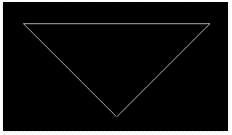
Example #2
Creating a Dwelling Page with Rectangle shapes and text
Lawmaking:
#include<iostream.h>
#include<conio.h>
#include<graphic.h>
#include<math.h>
void main()
{clrscr();
int one thousand=0,a;
initgraph(&g,&d,"");
setbkcolor(fourteen);
setcolor(six);
settextstyle(two,0,4);
outtextxy(180,130,"Grand");
setcolor(v);
settextstyle(2,0,four);
outtextxy(120,120,"O");
setcolor(half-dozen);
settextstyle(2,0,four);
outtextxy(300,120,"O");
setcolor(5);
settextstyle(2,0,four);
outtextxy(250,130,"Thou");
setcolor(2);
settextstyle(ii,0,4);
outtextxy(360,160,"L");
setcolor(three);
settextstyle(2,0,4);
outtextxy(310,130,"E");
setcolor(9);
settextstyle(2,0,4);
setcolor(8);
settextstyle(2,0,4);
outtextxy(110,250,"surf");
settextstyle(2,0,iv);
outtextxy(350,320,"Become AHEAD");
setcolor(6);
rectangle(130,210,450,210);
rectangle(90,310,170,340);
rectangle(360,320,510,320);
getch();
}
Explanation
The above code draws a rectangle shape along with text in a different color.
Output:
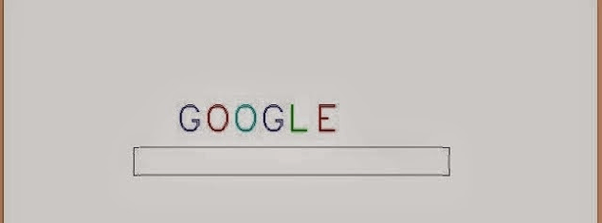
Example #three
Code:
#include<stdio.h>
#include<conio.h>
#include<graphics.h>
#include<dos.h>
void flood(int,int,int,int);
void main()
{
int gd,gm=DETECT;
clrscr();
detectgraph(&gd,&gm);
initgraph(&gd,&gm,"C:\\TurboC3\\BGI");
rectangle(threescore,60,90,90);
inundation (50,50,8,0);
getch();
}
void alluvion(int a,int b, int fcol, int col)
{
if(getpixel(a,b)==col)
{
delay(fifteen);
putpixel(a,b,fcol);
flood(a+1,b,fcol,col);
overflowing (a-1,b,fcol,col);
flood (a,b+1,fcol,col);
overflowing (a,b-1,fcol,col);
}
}
Explanation
The above code flooded a shape with the text color.
Output:
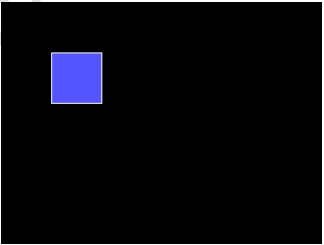
Example #iv
Code:
#include <conio.h>
#include <graphics.h>
#include <iostream>
#include <math.h>
#include <stdio.h>
#include <stdlib.h>
using namespace std;
void ellipsedr(int e1, int e2, int a1, int b1,
float alp, int color)
{
float tt = 3.fourteen / 180;
alp= 360 - alp;
setcolor(color);
int tetaa;
for (int j = 0; j < 360; j += ane) {
tetaa = j;
int x1 = a1 * cos(t1 * tetaa) * cos(t1 * al)
+ b1 * sin(t1 * tetaa) * sin(tt * alp);
int y1 = b1 * sin(t1 * tetaa) * cos(tt * alp)
- a * cos(tt * tetaa) * sin(tt * alp);
putpixel(e1 + x1, e2 - y1, color);
}
}
void view(int e1, int e2, int rr, int a1, int b1,
int alp, float pp, int color)
{
setcolor(color);
float tt = 3.14 / 180;
float ta, tb, d;
float angle = (pp * alp);
ta = cos(t * fmod(angle, 360));
tb = sin(t * fmod(angle, 360));
ta*= ta;
tb *= tb;
ta = ta / (a1 * a1);
tb = tb / (b1 * b1);
d = sqrt(ta + tb);
d = 1 / d;
int gox = e1 + (rr + d) * cos(tt * alp);
int goy = e2 - (rr + d) * sin(tt * alp);
int goang = angle + alp;
ellipsedr(gox, goy, a,
b, draw_ang, colour);
}
void elipsecirc(int xc, int yc,
int rr, int a1, int b1)
{
float tetaa = 0;
double hei, pi1;
hei = (a1 * a1) + (b1 * b1);
hei /= 2;
pi1 = sqrt(hei);
pi1 /= rr;
pi1 = 1 / (pi1);
for (;; tetaa -= 1) {
view(e1, e2, rr, a1, b1,tetaa, pi1, WHITE);
circumvolve(xcir, ycir, rr);
filibuster(25);
view(e1, e2, rr, a1, b1,tetaa, pi1, BLACK);
}
}
int main()
{
int gd = DETECT, gm;
initgraph(&gd, &gm, "");
int mx = getmaxx();
int my = getmaxy();
elipsecirc(mx / two, my / two,
90, 30, 26);
closegraph();
return 0;
}
Explanation
The to a higher place code displays an ellipse over the circumvolve by setting ten and y coordinates.
Output:
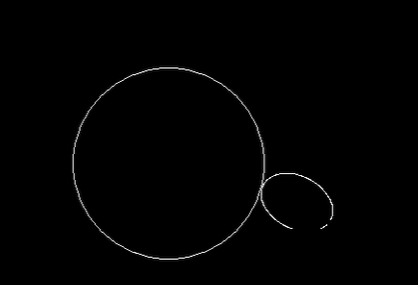
Conclusion
In this article, nosotros have described how graphics work in C++ programming. We have presented unproblematic and full general functions used in graphics to do programming. We have also discussed the design and example process to understand the concept.
Recommended Articles
This is a guide to C++ graphics. Hither we discuss how graphics work in C++ programming and Examples forth with the codes and outputs. You lot can as well look at the following article to learn more than –
- C++ accented value
- C++ thread( )
- C++ sort()
- C++ reserve()
Source: https://www.educba.com/c-plus-plus-graphics/
Post a Comment for "Draw Circle Using Graphics in C++"